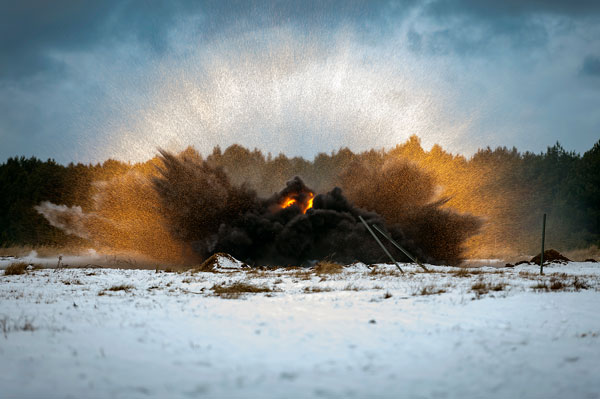In a war zone, combat engineers are a vital part of the ground force, building camps, forward positions and installing the vital infrastructure for smooth operations.
They’re also experts at demolition and blowing stuff up when needed.
“As Corps of Royal Canadian Engineers (CRCE), our mission has four components,” says Capt. Kim Marchand, a civil engineer and a 13-year member of the Canadian Armed Forces (CAF). “We ensure mobility, survivability, geomatics (mapping) and general support.”
Each member of the Canadian Military Engineers (CME), which comprise the CRCE, is skilled in specific expertise, from water quality engineering, plumbing, electrical, through to structural.
Some are explosives experts, often called in to ensure one of those four tenants, mobility — or conversely sometimes anti-mobility, says Capt. Marchand, an instructor based in Gagetown, Que.
Clearing a road by blowing a path through trees or damaged power lines, clearing mines are examples of mobility while clearing a minefield, blocking a road or blowing a bridge is an anti-mobility strategy.

It’s somewhat of a logistically difficult expertise to train for because finding bridges or roads to blow up for practice is hard to do, but Capt. Marchand says they do often ask civilian authorities if they need anything demolished.
There are few takers, so there’s a lot of training involving purpose-built wood bridges which are then demolished with explosives.
To keep their skills current — as with any CAF unit — training is constant. Capt. Marchand spent six months in Latvia this year with a contingent of demolition experts leading a NATO group through exercises.
“It interesting in that Canada was leading this so that was a good experience,” she said.
Previously, the demolition engineers had gone to Poland for similar exercises in 2017 where they collaborated to blow up a bridge. A big part of those training exercises is planning, she says.
“Usually in a combat situation we own the ground where we want to demolish a bridge or block a road. Sometimes we don’t.”
The first step is to send a team to recon the target, determining the support structures, material, access and sight lines. As in the civilian world, environmental impact is also a major consideration.

Then the demolition team meets to plan how and where to set the charges because taking out a bridge, for example, isn’t just about blowing it up, she adds.
“We may want to prevent the enemy from using that bridge but what if we need to use it later?” she says. “So, the decision to take it out is made much higher up for strategic reasons.”
To allow future access, she says, they usually only take down as much of the bridge as is required, usually only one span between piers so it can be bridged later with a temporary span.
“We use Medium Girder Bridges or Acrow bridges, the same as used in civilian applications, with trusses and girders,” she says. “We use a military load rating system for tonnage classification though, which is a standard calculation and number using the vehicle weight and axle loads.”
The combat demolition engineers work with C4, a standard plastic explosive that is extremely stable.
“We generally use a ‘det’ cord (detonation cord) which is like a tube filled with explosive and is instantaneous,” she says, noting it also allows for the crew to be far enough away from the site of the explosives and to be safe.











Recent Comments